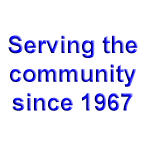
|
CELEBRATING PASSOVER AROUND THE GLOBE
The scattering of the Jews around the world over thousands of years to nearly every continent has meant that our traditions have evolved and been adapted to many different cultures and settings. As we join our own families and friends for seders in the Bay Area, we take comfort in knowing that Jews in every corner of the world will be having their own seders.
In Morocco – Inviting neighbours over to eat sweets
 Families of Moroccan and Algerian descent rejoice in the end of Passover with a Mimouna, a celebration that includes a feast of lavish sweets and pastries.
A table is heaped with items symbolizing luck or fertility, many repeating the number 5, such as dough with five fingerprint marks or five silver coins. Fig leaves, live fish, stalks of wheat, and honey might also be included. Among some Moroccan Jews, participants enter the ocean and toss pebbles behind their backs to ward off evil spirits.
Families of Moroccan and Algerian descent rejoice in the end of Passover with a Mimouna, a celebration that includes a feast of lavish sweets and pastries.
A table is heaped with items symbolizing luck or fertility, many repeating the number 5, such as dough with five fingerprint marks or five silver coins. Fig leaves, live fish, stalks of wheat, and honey might also be included. Among some Moroccan Jews, participants enter the ocean and toss pebbles behind their backs to ward off evil spirits.
In Ethiopia – Destroying earthenware dishes
Ethiopian Jews strongly identify with the story of Passover and, because they lacked Haggadot in Ethiopia, observe a local tradition of reading Exodus directly from the Torah. In some Ethiopian families, the matriarch destroys her earthenware dishes and makes a new set to mark a proper break from the past. During the holiday, Ethiopian Jews refrain from eating fermented dairy, such as yogurt, butter, or cheese. Matzah is homemade, often fashioned from chickpea flour, and on the morning of the Seder, a lamb might be slaughtered.
In Afghanistan – Whipping each other with scallions
Jews have lived in Afghanistan since at least the Babylonian conquest more than 2,500 years ago, but, very sadly, almost none remain today. One distinct local tradition was using scallions or leeks to stand for the Egyptian slave drivers’ whips, using them to lightly “whip” each other’s backs. Today, the largest group of Afghan Jews in the world is comprised of 200 families in Queens, New York.

In Poland – Re-enacting the crossing of the Red Sea
Hasidic Jews from the Polish town of Góra Kalwaria re-enact the crossing of the Red Sea on the seventh day of Passover by pouring water on the floor, lifting up their coats, and naming the towns that they would cross in their region of Poland. They raise a glass to each town and thank G-d for helping them reach their destination.
In Spain – Tapping guests on the head
In a custom that began in Spain in the 14th century, the seder leader walks around the table three times with the seder plate in hand, tapping it on the head of each guest. Many Moroccan, Turkish, and Tunisian Jews adopted this Sephardic tradition, which is said to bless those whose heads are tapped. This is sometimes connected to the Talmudic custom of “uprooting” the seder plate so guests might ask questions about the Jews in Egypt.
In South Africa – Apples are the key ingredient.
South Africa has a vibrant and thriving Jewish community with a history that reaches back to immigration from Europe in the 19th century. Today, around 70,000 Jews remain.
Despite the adherence to tradition, local influences still sneak into the seder meal. They have traditional gefilte fish, but it’s more ball-shaped and has a yellow tint from saffron. Most striking is South Africa’s positioning in the southern hemisphere, which means North America’s familiar autumn produce is in season during South Africa’s Spring.
The result: apples are a vital ingredient in the Passover menu – from the traditional charoset to the bits of green apple lending crunch and sweetness to chopped herring and apples stewed with cinnamon and cloves for dessert.
https://bit.ly/3Sij1hx
�
|



